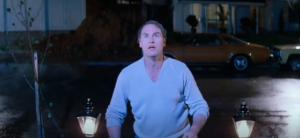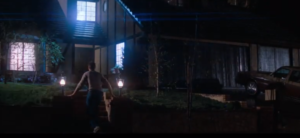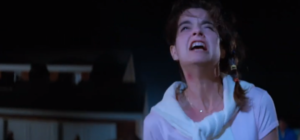The Use of Real Skeletons in the 1982 Movie Poltergeist
The 1982 horror movie “Poltergeist,” directed by Tobe Hooper and produced by Steven Spielberg, is a film that has garnered both acclaim and controversy over the years. One of the most enduring and chilling stories surrounding the production is the alleged use of real human skeletons in certain scenes. This article delves into the origins of this claim, its implications, and how it fits into the broader context of horror filmmaking.
Origins of the Skeleton Story
The story of real skeletons being used in Poltergeist first gained traction from an interview with actress JoBeth Williams, who played Diane Freeling in the film. Williams claimed that real skeletons were used in the infamous pool scene because they were cheaper than plastic ones. This revelation shocked fans and added a layer of macabre authenticity to the film’s eerie reputation.

The Pool Scene
One of the most iconic and terrifying scenes in “Poltergeist” involves Diane Freeling falling into a muddy pool filled with skeletons. The realism of this scene, combined with Williams’ later comments, led many to believe that actual human remains were indeed used. The practical reasons cited, such as budget constraints, made the story more plausible.
Hollywood’s Use of Real Skeletons
The use of real human skeletons in Hollywood is not unprecedented. Before the advent of advanced special effects and high-quality replicas, real skeletons were sometimes used in films for practical and financial reasons. For example, the 1960 film “House on Haunted Hill” and the 1963 film “Jason and the Argonauts” reportedly used real human bones.

Ethical and Legal Implications
The idea of using real human remains in films raises significant ethical and legal questions. In the case of “Poltergeist,” if real skeletons were used without proper consent or ethical considerations, it would be a serious violation of respect for the deceased. Modern filmmaking practices have strict regulations regarding the use of human remains, ensuring that such actions would be highly unlikely today.
The Curse of Poltergeist
The real skeletons story is often linked to the so-called “Poltergeist curse,” a series of unfortunate events and untimely deaths associated with the cast and crew of the film. Dominique Dunne, who played the eldest daughter Dana, was tragically murdered in 1982. Heather O’Rourke, the young actress who played Carol Anne, died unexpectedly in 1988. These events have fueled speculation and urban legends about a curse linked to the film’s production.
Impact on Horror Filmmaking
The claim that real skeletons were used in “Poltergeist” has had a lasting impact on the horror genre. It exemplifies the lengths to which filmmakers might go to achieve realism and authenticity in their work. The story has also contributed to the film’s enduring legacy as a truly haunting piece of cinema.

Conclusion
While the use of real skeletons in “Poltergeist” remains a topic of debate and speculation, it underscores the film’s eerie and unsettling atmosphere. Whether true or not, the story has become an integral part of the film’s history and has cemented its place in horror lore. As viewers continue to be fascinated by this tale, “Poltergeist” remains a testament to the power of urban legends in enhancing the mystique of classic horror films.
Poltergeist (2015) – A Modern Take on a Classic Horror
Poltergeist 2015 is a remake of the iconic 1982 horror film directed by Tobe Hooper and produced by Steven Spielberg. This modern adaptation, directed by Gil Kenan and produced by Sam Raimi, aims to bring the chilling story to a new generation of horror fans. While maintaining the essence of the original, the 2015 version introduces contemporary elements and advanced visual effects to enhance the scare factor. This article explores the plot, characters, production, reception, and impact of Poltergeist 2015.
FAQs
Q1: Were real skeletons used in other Hollywood films? A1: Yes, real skeletons were used in several older films due to practical and financial reasons, including “House on Haunted Hill” and “Jason and the Argonauts.”
Q2: Is there any official confirmation about the use of real skeletons in “Poltergeist”? A2: While JoBeth Williams and some crew members have mentioned it, there has been no official confirmation from the production team.
Q3: What are the ethical considerations regarding the use of real skeletons in films? A3: Using real human remains raises serious ethical questions about respect for the deceased and consent. Modern regulations now prevent such practices.
Q4: What is the “Poltergeist curse”? A4: The “Poltergeist curse” refers to a series of tragic events and untimely deaths among the cast and crew, believed by some to be linked to the film’s production.
Q5: How has the real skeleton story impacted the legacy of “Poltergeist”? A5: The story has added to the film’s eerie reputation and has become a significant part of its legacy in horror cinema.